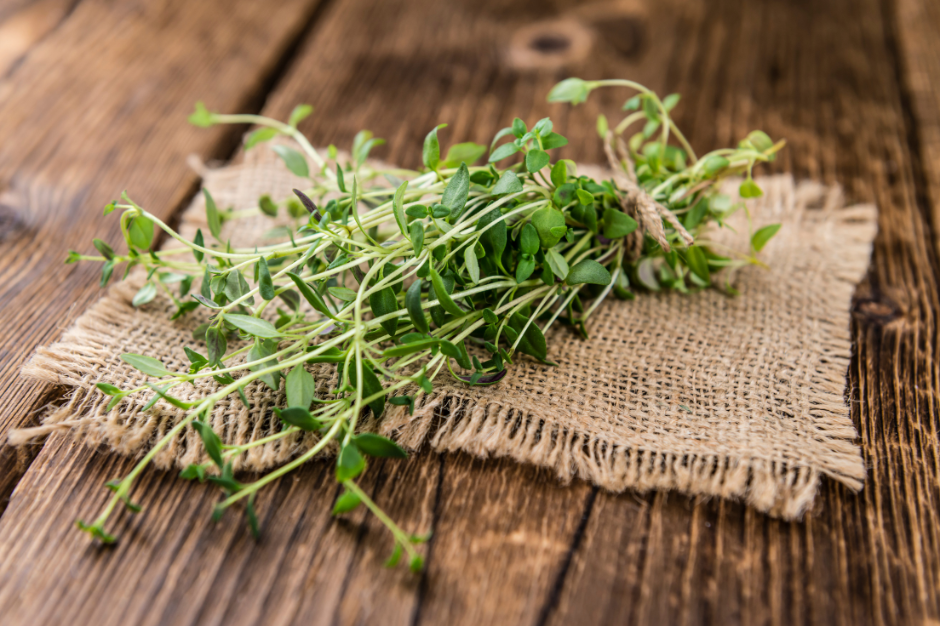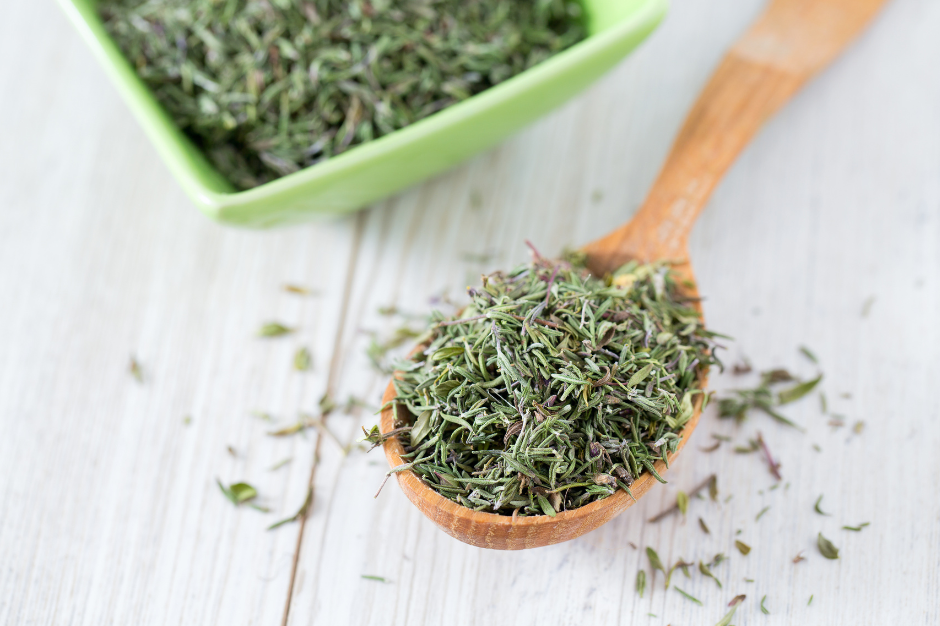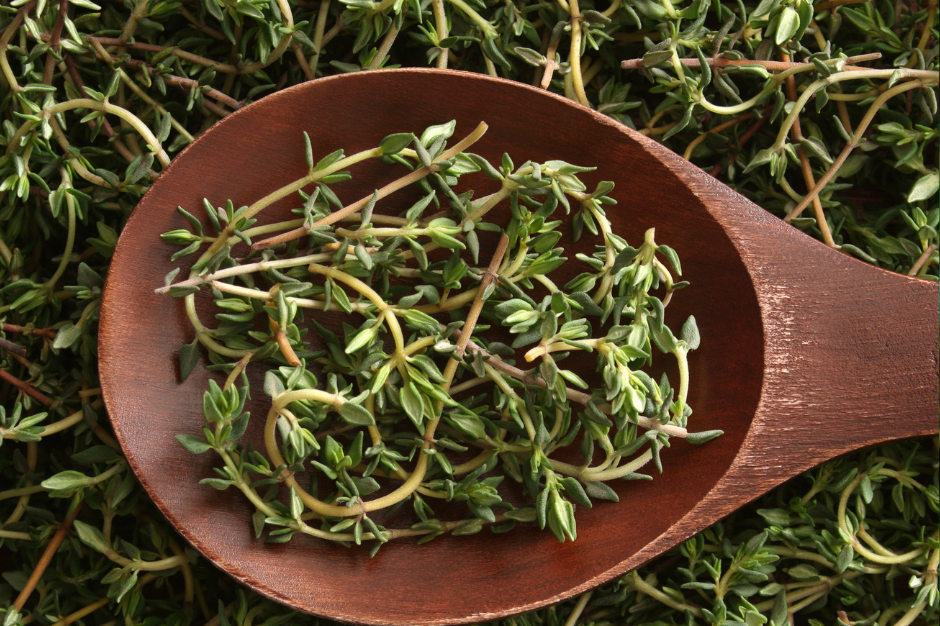Overview
Thyme is a delicate looking herb with a penetrating fragrance, thyme is a wonderful addition to bean, egg and vegetable dishes.
Both fresh and dried thyme is available in your local supermarket throughout the year.
Thyme leaves are curled, elliptically-shaped and very small, measuring about one-eighth of an inch long and one-sixteenth of an inch wide. The upper leaf is green-grey in colour on top, while the underside is a whitish colour.
Along with fresh sprigs of parsley and bay leaves, thyme is included in the French combination of herbs called bouquet garni used to season stock, stews and soups.




